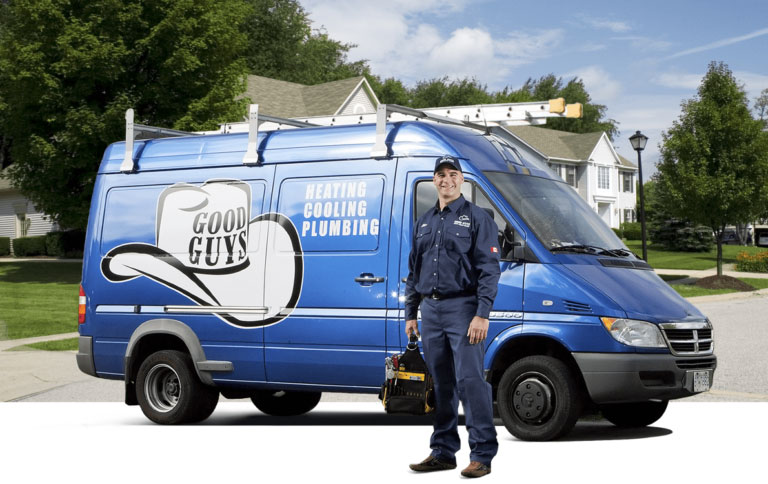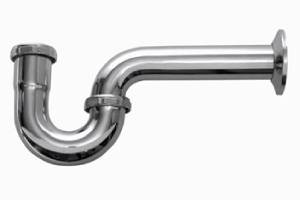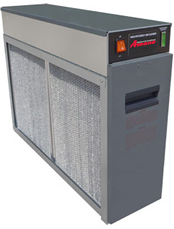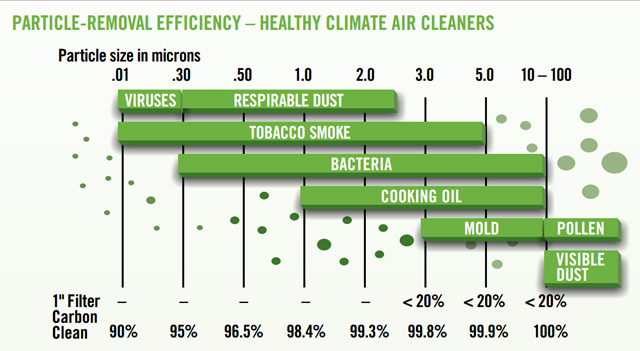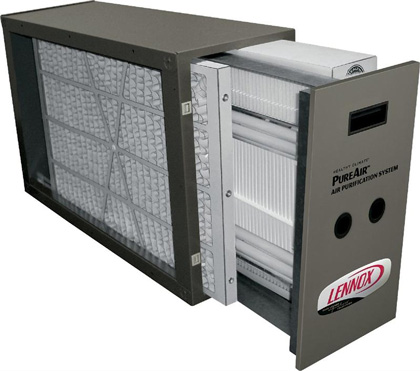How do professionally installed air cleaners compare to 1” filters and portable air cleaners?
According to North America’s best regarded consumer publication, professionally installed whole-house air cleaners with 4-5” filters outperform standard 1” models (even including the more advanced “allergen reducing” filters that are sold in hardware stores). They outperformed room air purifiers by an even greater degree, as most of these systems ranked very poorly. According to the EPA, most portable air cleaners currently on the market do not circulate enough air to effectively remove large particles such as pollen, dust mite, and cockroach allergens.
This is why we recommend you install a whole-house air purification system. These systems utilize the airflow provided by your furnace to clean all of your home’s air, which also means you will only have a single system to maintain. We install several types of whole-house air cleaners, which are described below.
Electronic Air Cleaners
Electronic air cleaners (EACs) consist of an ionizer that gives particles a negative charge followed by a series of positively charged plates that collect the particles. Most also have an optional activated charcoal filter, which can remove certain odours and VOCs (volatile organic compounds).
EACs are popular because they do an extremely good job at cleaning air, removing most particles as small as 0.1 microns (1/250,000 of an inch, smaller than most bacteria). A 1999 CMHC study ranked them #1 out of ten different filter types. They also do not require the regular replacement of any filters, UV lamps, or other components (except for the optional activated charcoal filters).
Unfortunately, these filters have also been found to produce ozone, a lung irritant. However, indoor ozone levels usually remain below typical outdoor ozone levels, so it’s debatable whether this is a serious concern (except with some individuals who are especially sensitive to ozone). Still, homeowners who are especially concerned with IAQ may opt for other filter types for this reason. See our electronic air cleaners post for more information on this issue.
A more recent CMHC study showed that these filters must be cleaned regularly (as often as once a week) to keep them operating at top efficiency. You can see an EAC cleaning video here.
HEPA Bypass Filters
HEPA filters remove over 99.97% of all particles that are over 0.3 microns in size. The CMHC study confirmed that these filters remove almost all of the particles from the air passing through them. Replacement filters are more expensive than with other filter types, but overall operating costs are still moderate since the main filter can last up to 5 years. Only part of the airflow is directed across the filter, and this can be a concern when the furnace is not regularly circulating air (as is usually the case with older, non-variable speed furnaces that are not used for continuous circulation). The ease of installation depends mainly on how your home’s ductwork is arranged.
4-5” Media Filters
North America’s leading consumer publication gave Lennox’s 5” MERV 16 filter the highest rating they have ever given an air purifying device. They greatly outperformed 1” models (which don’t require a new filter cabinet to be installed), including even the fancier “allergen reducing” kinds. These filters have a large surface area (since the filter media is folded over a 4” or greater width), so they only require annual replacement in most homes. They are nearly as effective as HEPA filters.
Lennox PureAir Air Purification System
Lennox’s PureAir air purification system includes a spot for their top-rated MERV 16 and MERV 10 5” filters, followed by titanium dioxide catalyst plates and UV lamps. The catalyst plates attract bacteria, viruses, VOCs (volatile organic compounds), and odour-causing molecules, which are then destroyed by the UV lamps.
Lennox claims this system:
-“Cleans the air in your home better than any other single system you can buy”
-“Removes OVER 95% of particles ranging in size down to 0.3 micron [1/75,000 of an inch, smaller than most bacteria and many viruses].”
-“Removes OVER 90% of bioaerosols ranging in size down to 0.01 micron [1/2,500,000 of one inch].”
-“Removes and destroys approximately 50% of household odors and chemical vapors in a 24-hour period.”
UV Lamps
UV lamps destroy living contaminants such as bacteria, viruses, and pollen. They are more effective when coupled with a special filter that traps these things (such as with the PureAir system). However, they can still be effective when installed by themselves in the ductwork. Lennox’s UV Germicidal Lamps can “reduce concentrations of airborne bioaerosals [bacteria, viruses, pollen, etc.] by 50% within as little as 45 minutes.”
Also, when installed above an air conditioning coil, they can prevent bacteria from growing on it.
To have one of these air cleaning systems installed, call 604 GOOD GUY (604 466 3489), or use our online form (select “Other” for “Type of service” and “Type of system”).


